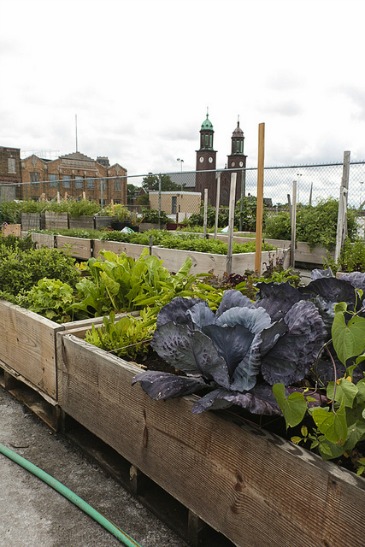Where Are Most Of Chicago's Green Thumbs?
By Melissa Wiley in Food on Oct 16, 2014 8:30PM
 Most of Chicago’s agriculture is right in your own backyard. The results of a study mapping the city’s garden plots via Google Earth found that community gardening and urban farms account for only 13 percent of all Chicago husbandry, while home gardens in backyards and vacant lots outnumber them threefold.
Most of Chicago’s agriculture is right in your own backyard. The results of a study mapping the city’s garden plots via Google Earth found that community gardening and urban farms account for only 13 percent of all Chicago husbandry, while home gardens in backyards and vacant lots outnumber them threefold.
University of Illinois at Urbana-Champaign doctoral candidate John Taylor and crop sciences researcher Sarah Taylor Lovell were skeptical of the number of urban farms and community gardens local nongovernmental organizations had tallied. Many of these, the pair later found, were only planters or other landscaping features producing no actual food. Small gardens in backyards and vacant lots, on the other hand—and their role in hydrating many of the city’s food deserts—went largely unreported.
Taylor uploaded lists provided to him from myriad nongovernmental organizations into Google Earth and found that of the 1,236 community gardens he was told existed, only 160 produced any fruits or vegetables. He conducted further Google Earth searches for genuine food-production sites and, eight months later, identified 4,648 urban agriculture sites—most residential gardens no more than 50 square feet.
So where are most of Chicago’s green thumbs? Chinatown and Bridgeport, baby. Northwest Side neighborhoods with large concentrations of Eastern and Southern European immigrants also have their share of avid gardeners, which is not to say each neighborhood grows the same crops. Immigrants often bring seeds with them from the old country to continue cooking food that tastes like home. Taylor noted a Mexican enclave grows dense concentrations of tropical corn, for instance, for its leaves to make tamales.
Similarly, in Northwest Side neighborhoods populated by detached houses, gardening typically occurs in backyard plots while vacant lots serve as gardens often shared by neighbors in economically disadvantaged areas. Investing in productive use of such space, which abounds in many of the city’s food deserts, could help allay hunger in these areas, the study also suggests.